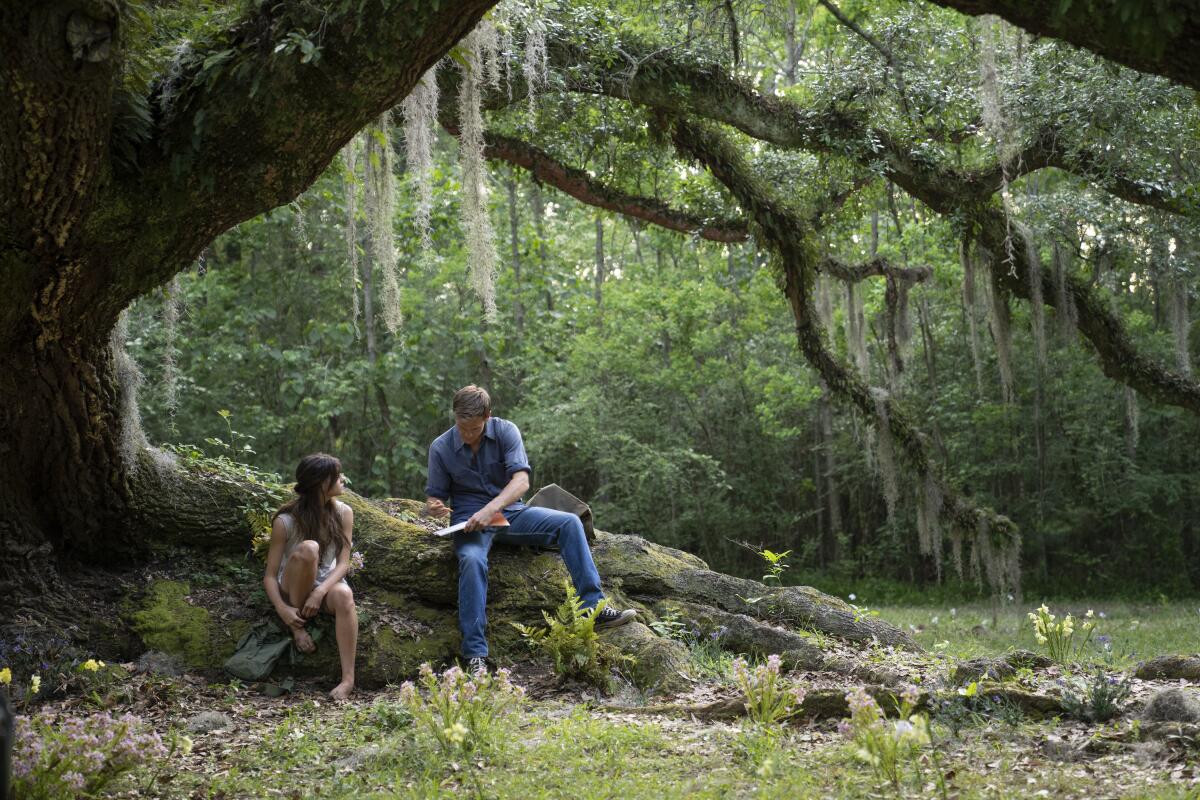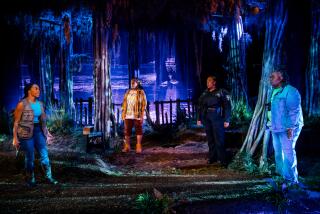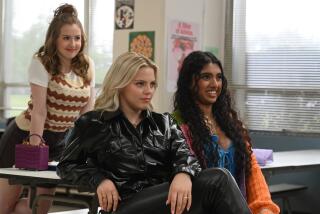Review: âWhere the Crawdads Singâ is the latest literary sensation turned ho-hum movie

In 2018, retired zoologist Delia Owens, the author of the bestselling 1984 memoir âCry of the Kalahari,â published her first novel at the age of 69. âWhere the Crawdads Singâ is set on the North Carolina coast in the 1950s and â60s, threading romance and murder mystery through the life story of a young, isolated woman, Kya, who grows up abandoned in the marsh. The story is a bit far-fetched, the characterizations broad, but thereâs a beauty in Owensâ description of Kyaâs relationship to the natural world. Her derisive nickname, âthe Marsh Girl,â ultimately becomes her strength.
âWhere the Crawdads Singâ has become a legitimate publishing phenomenon, one of the bestselling books of all time, despite a controversy bubbling in Owensâ past â a connection to the killing of a suspected animal poacher in Zambia. Reese Witherspoon bestowed the book with her book club blessing, and as she has done with other titles from her club, like âBig Little Lies,â Witherspoon has produced the film adaptation of âWhere the Crawdads Sing,â written by Lucy Alibar, directed by Olivia Newman, and starring Daisy Edgar-Jones as the heroine, Kya.
For your safety
The Times is committed to reviewing theatrical film releases during the COVID-19 pandemic. Because moviegoing carries risks during this time, we remind readers to follow health and safety guidelines as outlined by the CDC and local health officials.
The film is easily slotted into the Southern gothic courtroom drama sub-genre â itâs like âA Time to Killâ with a feminine touch. While the nature of adaptation requires compression and elision, the film dutifully tells the story that fans of the book will turn out to see brought to life on the big screen. But in checking off all the plot points, the movie version loses what makes the book work, which is the time we spend with Kya.
Kya is a tricky protagonist whose life story requires a certain suspension of disbelief. Abandoned by her mother (Ahna OâReilly) and siblings escaping the drunken abuse of her father (Garret Dillahunt), who later disappears, young Kya (Jojo Regina) survives on her own, selling mussels to the proprietor of the local bait and tackle shop, Jumpinâ (Sterling Macer Jr.). His wife, Mabel (Michael Hyatt), takes pity on Kya and offers her some clothes and food donations, but itâs an exceedingly tough existence, something that the film does not manage to fully convey.
As a teen, Kya forms a friendship with a local boy, Tate (Taylor John Smith), who teaches her to read, and though their relationship turns romantic, he ultimately leaves her for college. Abandoned once again, she seeks companionship with popular local cad Chase Andrews (Harris Dickinson). Itâs his death, from a fall at the rickety fire tower, that sees Kya on trial in the town of Barkley Cove, which ultimately becomes a referendum on how sheâs been harshly judged over the years by the townspeople.
The only reason Kya works in the book is the amount of time the reader spends with her in the marsh, understanding the tactics she uses to get by, and getting to know the natural world in the way that she does, observing the patterns and life cycles of animals, insects, and plants. The deep knowledge of her environment and ad-hoc education from Tate helps Kya overcome poverty, as she publishes illustrated books of local shells, plants, and birds. But in the film, which sacrifices getting to know her in order to prioritize the more scandal-driven twists and turns, Kya comes off as somewhat silly, a bit easy to laugh at in her naivetĂŠ and guilelessness.
Thereâs also the matter of plausibility, and the shininess with which this rough, wild world has been rendered by Newman and cinematographer Polly Morgan. The marsh (shot on location in Louisiana) is captured with a crisp, if perfunctory beauty, but itâs hard to buy English rose Edgar-Jones in her crisp blouses and clean jeans as the near-feral naturalist who has been brutally cast out by society. Everythingâs just too pretty, a Disneyland version of the marsh.
The whole world feels sanded-down and spit-shined within an inch of its life, lacking any grime or grit that might make this feel authentic, and that extends to the storytelling as well. It feels exceedingly rushed, as the actors hit their marks and deliver their monologues with a sense of obligation to moving the plot along rather than developing character. Hyatt, as Mabel, and David Strathairn, who plays Kyaâs lawyer, Tom Milton, are the only actors who deliver grounded performances that feel like real people â everyone else feels like a two-dimensional version of an archetype spouting the necessary backstory or subtext to keep the plot churning forward.
Though it is faithful, âWhere the Crawdads Singâ is lacking the essential character and storytelling connective tissue that makes a story like this work â an adaptation such as this cannot survive on plot alone.
Katie Walsh is a Tribune News Service film critic.
'Where the Crawdads Sing'
Rating: PG-13, for sexual content and some violence including a sexual assault
Running time: 2 hours, 5 minutes
Playing: In general release July 15
More to Read
Only good movies
Get the Indie Focus newsletter, Mark Olsen's weekly guide to the world of cinema.
You may occasionally receive promotional content from the Los Angeles Times.










